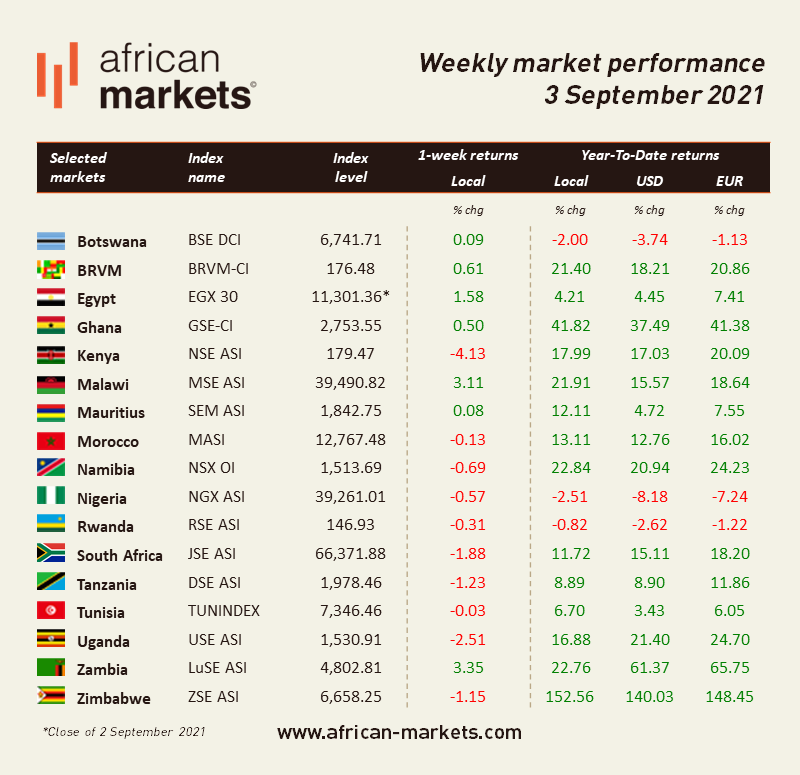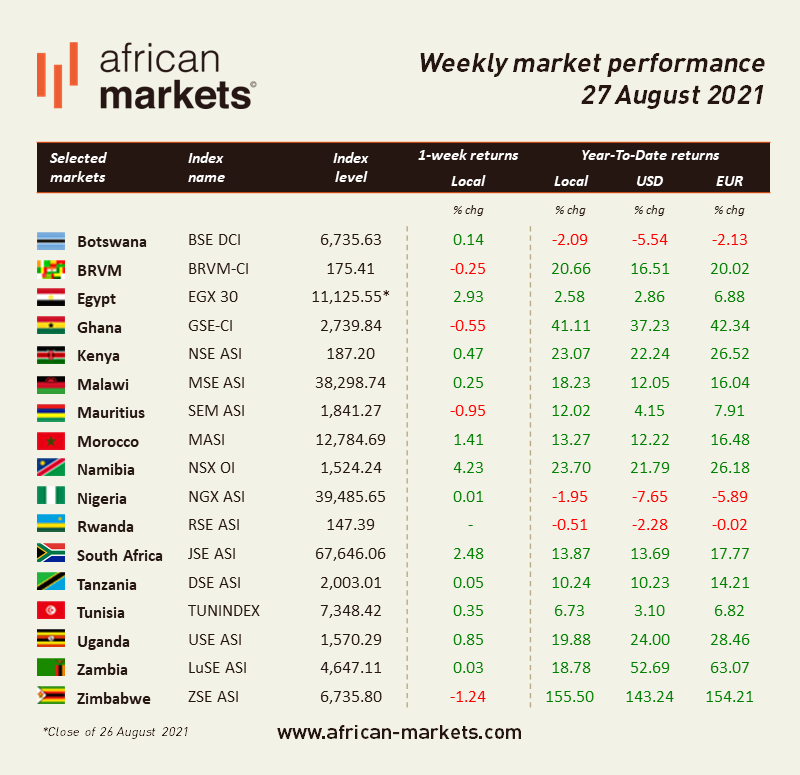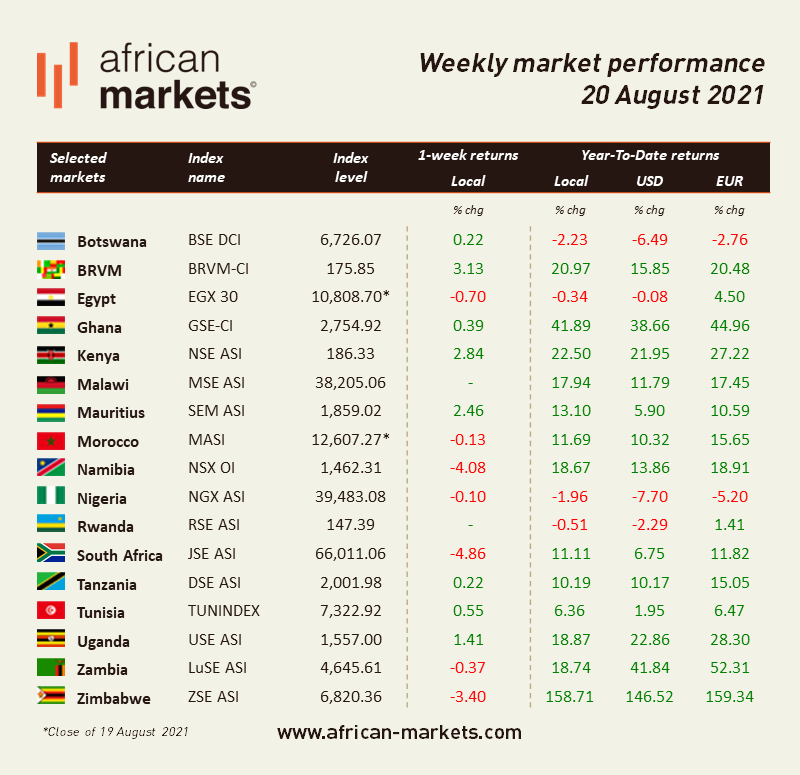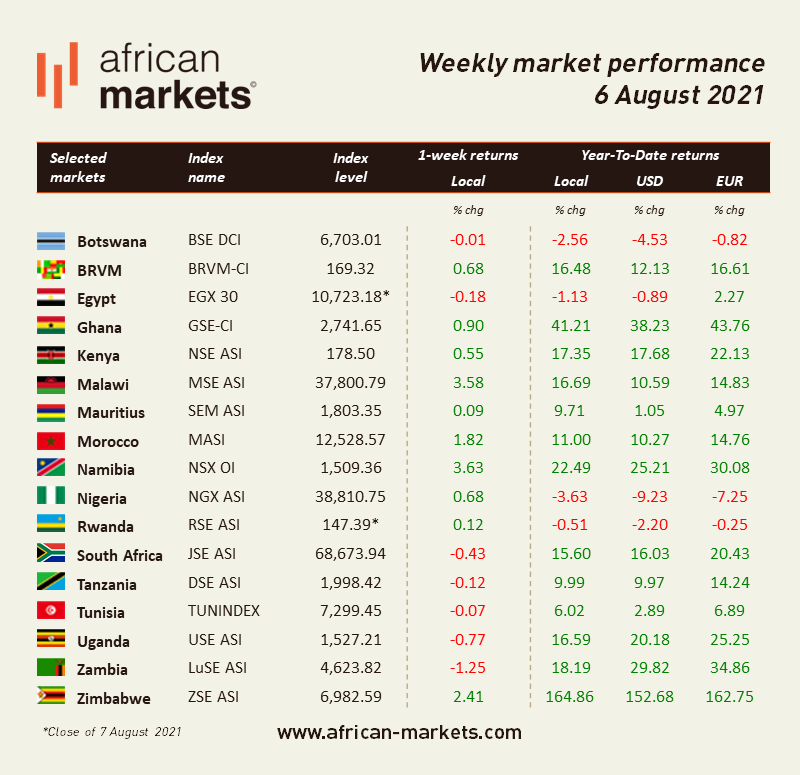Going into the last week of November, African markets mostly closed negatively. With only 5 out of the markets under coverage reaching positive territories.
One of the biggest overhang on African Markets has been removed this week as S&P affirmed South Africa’s credit rating at one level above junk and the outlook remained negative. S&P cut local currency rating to BBB. The index has been highly volatile over the last year moving in sync with political tensions that have affected the country. What one can call a last chance given by the credit rating should trigger an acceleration in structural reforms to stimulate economic growth expanding at its lowest pace since 2009. The S&P affirmation came as a relief for sentiment and a few quarters of true reforms and less political noise will make room for much needed economic growth. We may have reached the trough or we are not far from it. The JSE ASI lost 2.84%.
After several of its counterparts before, Kenya is supposedly planning to tap into the international market beginning 2017 to finance its budget deficit for an amount of $1.5bn. This could be in the form of a bond, a commercial loan or a mix of the two. The country’s Treasury Principal Secretary already announced mid-November that Kenya would raise the equivalent of $1.5 bn in commercial loans. In other news, Kenya’s inflation rate reached a nine-month high on increased prices of food & fuel. The NSE ASI lost 0.71%.
The NGSE ASI gained 1.61%. Nigeria’s government approved the new N7.3 trillion budget proposal of President Buhari this week. This represents a 20% increase over 2016’s budget. Buhari is expected to present details of the budget to the Senate and the Ouse of Representatives next week. Deliberations and approval may take a few months. This comes as OPEC reached an agreement on output cut this week, a decision which we expect will bring some air to Nigerian budget and economy.
The EGX30 ended the week on a positive note, gaining 1.72%. The index heavyweight, the CIB increased by 2.9% as news came that the bank may sell 70-80% of its investment arm CI Capital to a group of investors.
The Central Bank of Zimbabwe has launched a new national currency to stop the outflow of US dollars and thus reduce cash shortage. The bond notes, the name of the new currency, is pegged at par with the US dollar and backed by a $200 mn bond facility with Afreximbank. The country’s economy has been suffering from a severe drought and high unemployment rates on top of a decline in commodity prices. One of the risks and not an unknown risk in the country is hyperinflation but market seems to have positively welcomed the news as the ZSE Ind. gained 6.07%.




































